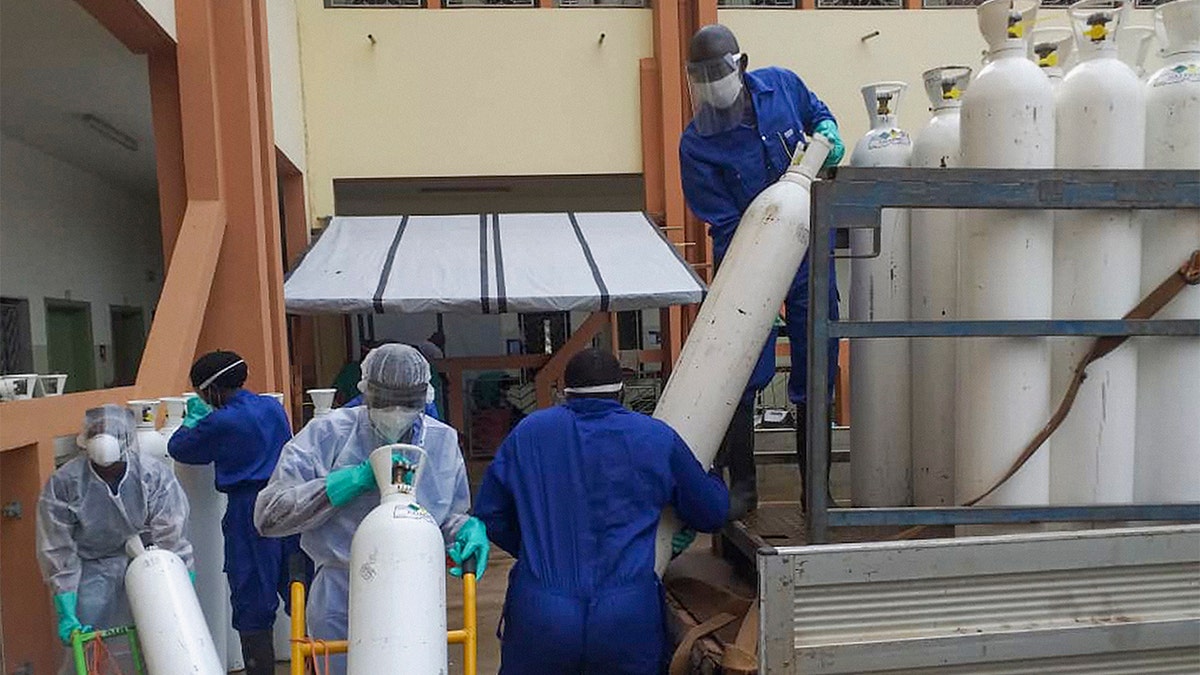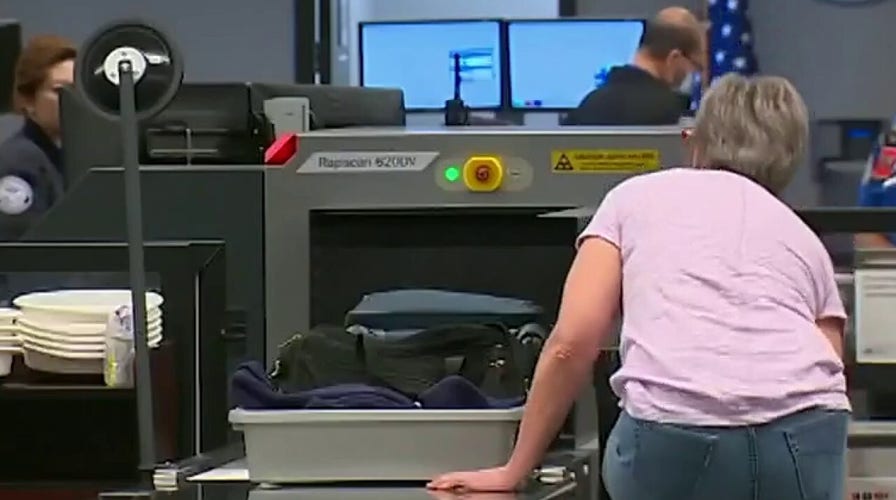EU considers coronavirus travel ban from US as Europe reopens borders
U.S. could be placed on list of origin countries that might be barred from travel to Europe amid COVID-19 crisis; reaction and analysis from Fox News medical contributor Dr. Marc Siegel.
As the coronavirus spreads, soaring demand for oxygen is bringing out a stark global truth: Even the right to breathe depends on money. In much of the world, oxygen is expensive and hard to get — a basic marker of inequality both between and within countries.
CLICK HERE FOR COMPLETE CORONAVIRUS COVERAGE
In wealthy Europe and North America, hospitals treat oxygen as a fundamental need, much like water or electricity. It is delivered in liquid form by tanker truck and piped directly to the beds of coronavirus patients. Running short is all but unthinkable for a resource that literally can be pulled from the air.

FILE - In this Friday, May 22, 2020 file photo, patients testing positive for COVID-19 breathe in oxygen in the emergency area of the Guillermo Almenara hospital in Lima, Peru. As the coronavirus spreads, soaring demand for oxygen is bringing out a stark global truth: Even the right to breathe depends on money. In much of the world, oxygen is expensive and hard to get — a basic marker of inequality both between and within countries. (AP Photo/Rodrigo Abd)
In Spain, as coronavirus deaths climbed, engineers laid 4 miles of tubing in less than a week to give 1,500 beds in an impromptu hospital a direct supply of pure oxygen. Oxygen is also plentiful and brings the most profits in industrial use such as mining, aerospace, electronics and construction.
But in poor countries, from Peru to Bangladesh, it is in lethally short supply.
Medical oxygen comes in liquid and compressed forms.
Liquid oxygen is what wealthy countries largely use. Air is chilled to minus 186 degrees Celsius, so that the oxygen condenses into a liquid in much the same way dew forms in cool night air. It is then pumped into a truck-sized double-thick vacuum flask on wheels and sent to hospitals. There, pumps warm it back into a gas.
Compressed oxygen is pressurized into cylinders about the size of a small adult. Each weighs about 110 pounds.

Medical workers offload cylinders of oxygen at the Donka public hospital where coronavirus patients are treated in Conakry, Guinea, on Wednesday, May 20, 2020. Before the coronavirus crisis, the hospital in the capital was going through 20 oxygen cylinders a day. By May, the hospital was at 40 a day and rising, according to Dr. Billy Sivahera of the aid group Alliance for International Medical Action. Oxygen is the the facility's fastest-growing expense, and the daily deliveries of cylinders are taking their toll on budgets. (AP Photo/Youssouf Bah)
CORONAVIRUS: WHAT YOU NEED TO KNOW

FILE - In this Monday, June 8, 2020 file photo, people wearing masks amid the COVID-19 coronavirus pandemic wait for hours, some for 10 hours, to refill their oxygen tanks at a shop in Callao, Peru. Long neglected hospitals around the world are reporting shortages of oxygen as they confront the spread of the disease. (AP Photo/Martin Mejia)
For many severe COVID patients, hypoxia — radically low blood-oxygen levels — is the main danger. Only pure oxygen in large quantities buys the time they need to recover. Oxygen is also used for the treatment of respiratory diseases such as pneumonia, the single largest cause of death in children worldwide.
Yet until 2017, oxygen wasn’t even on the list of essential medicines from the World Health Organization. In vast parts of sub-Saharan Africa, Latin America and Asia, that meant there was little money from international donors and little pressure on governments to invest in oxygen knowledge, access or infrastructure.
“Oxygen has been missing on the global agenda for decades,” said Leith Greenslade, a global health activist with the coalition Every Breath Counts.
The issue got more attention after British Prime Minister Boris Johnson narrowly survived a bout of coronavirus, crediting his recovery to the National Health Service and “liters and liters of oxygen.” But Johnson is a prominent figure in one of the world’s richest countries.

FILE - In this Friday, May 22, 2020 file photo, patients testing positive for COVID-19 breathe in oxygen in the emergency area of the Guillermo Almenara hospital in Lima, Peru. As the coronavirus spreads, soaring demand for oxygen is bringing out a stark global truth: Even the right to breathe depends on money. In much of the world, oxygen is expensive and hard to get — a basic marker of inequality both between and within countries. (AP Photo/Rodrigo Abd)
Unlike for vaccines, clean water, contraception or HIV medication, there are no global studies to show how many people lack oxygen treatment — only broad estimates that suggest at least half of the world’s population does not have access to it.
In the few places where in-depth studies have been carried out, the situation looks dire. In Congo, only 2 percent of health care facilities have oxygen; in Tanzania, it’s 8 percent, and in Bangladesh, 7 percent, according to limited surveys for USAID. Most countries never even get surveyed.
The Associated Press contributed to this report.

